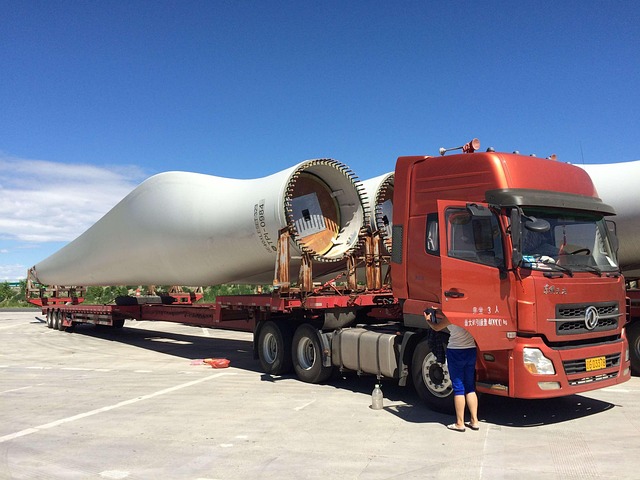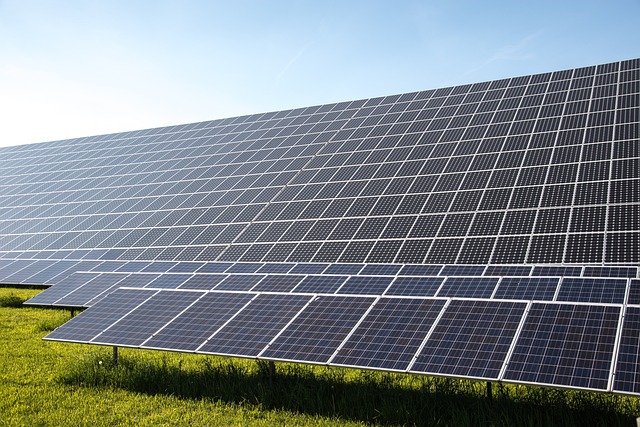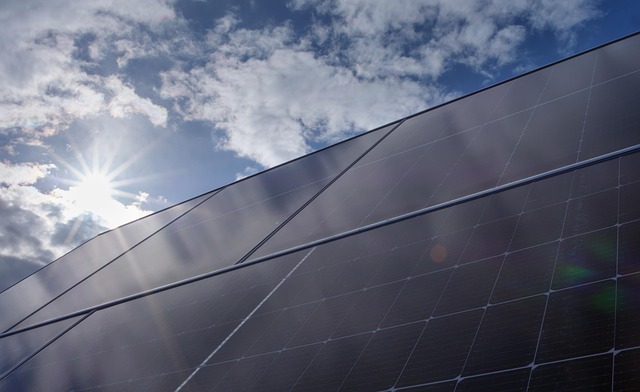
Future Trends in Solar Energy: What Lies Ahead?
As the world grapples with the challenges of climate change and seeks sustainable energy solutions, solar energy stands out as a frontrunner in the transition to renewable resources. With advancements in technology, policy support, and shifting consumer behaviors, the solar energy landscape is undergoing a rapid transformation. This article explores the future trends in solar energy, shedding light on what lies ahead for this burgeoning sector.
The Growing Importance of Solar Energy
Solar energy harnesses the power of the sun to generate electricity, offering a clean and renewable alternative to fossil fuels. The increasing impact of global warming, rising energy demands, and diminishing natural resources have propelled solar energy into the spotlight. As countries pledge to meet climate targets, the adoption of solar energy is expected to accelerate, ultimately reshaping the global energy mix.
Technological Innovations
Advancements in solar technology are among the most significant drivers of the solar energy sector. Several emerging technologies promise to enhance solar power efficiency, reduce costs, and facilitate broader adoption.
Perovskite Solar Cells
Perovskite solar cells have emerged as a promising alternative to traditional silicon-based solar cells. With superior efficiency rates and reduced production costs, perovskite cells are paving the way for a new generation of solar panels. Ongoing research is focused on improving their stability and lifespan, which could lead to widespread commercial use in the coming years.
Bifacial Solar Panels
Bifacial solar panels capture sunlight from both sides, maximizing energy production. By reflecting light from the ground, these panels can increase overall efficiency by 10-20%. As installation costs decrease and demand grows, bifacial technology is poised for significant adoption in utility-scale projects and commercial installations.
Solar Skins and Smart Technology
The integration of smart technology into solar systems is revolutionizing the way users interact with solar energy. Smart inverters equipped with advanced software allow for real-time monitoring, predictive maintenance, and enhanced grid interaction. Solar skins, which integrate seamlessly with building architecture, are also gaining popularity, allowing for aesthetically pleasing installations without sacrificing efficiency.
Energy Storage Solutions
One of the challenges faced by solar energy is its intermittent nature—solar power generation is reliant on sunlight, making storage solutions essential for consistent energy supply. The advancement of energy storage technologies is crucial to enhancing solar energy’s reliability and grid integration.
Lithium-Ion and Beyond
Currently, lithium-ion batteries dominate the energy storage market due to their efficiency, scalability, and decreasing costs. However, research into alternative battery technologies, such as solid-state batteries and flow batteries, is gaining momentum. These technologies promise greater energy density, longer life cycles, and increased safety. The availability of more efficient storage solutions will undoubtedly strengthen solar energy’s position in the energy market.
Grid Integration and Smart Grids
As solar energy adoption rises, the need for resilient and flexible electrical grids becomes paramount. Smart grids that incorporate advanced metering infrastructure and demand response systems enable more effective integration of solar energy into the existing energy framework. Through these systems, energy can be stored during peak production hours and distributed efficiently when needed, enhancing grid reliability.
Policy and Regulatory Landscape
Government policies play a crucial role in shaping the solar energy landscape. As global awareness of climate change grows, many countries are implementing incentive programs, tariffs, and regulations that favor the expansion of solar energy.
Increased Incentives and Support
Investment tax credits and renewable energy certificates continue to be pivotal in driving solar installations. Many governments offer incentives to individuals, businesses, and utility companies, stimulating demand for solar technology. As policies evolve and financial mechanisms are refined, the solar market is likely to experience accelerated growth.
Global Climate Agreements
International climate agreements, such as the Paris Agreement, require nations to reduce carbon emissions and transition to renewable energy sources. Compliance with these agreements is likely to drive further investment in solar infrastructure, prompting governments to create favorable conditions for solar energy adoption.
Consumer Behavior and Adoption Rates
Consumer perception and behavior towards solar energy are vastly changing, primarily due to increased awareness of environmental issues and economic advantages. As a result, the demand for solar energy is on the rise, leading to new trends in adoption.
Community Solar Projects
Community solar initiatives enable individuals to invest in or subscribe to shared solar energy systems. This makes solar energy more accessible to renters or those unable to install traditional solar panels on their properties. These collective efforts are fostering a sense of community and expanding renewable energy access across diverse demographics.
Corporate Sustainability Goals
As corporations increasingly prioritize sustainability, many are investing in solar energy solutions to offset their carbon footprints. Major companies are adopting solar power for their operations, transitioning towards net-zero goals and setting a precedent for other businesses. This corporate shift not only fuels demand for solar energy but also pushes for advancements in commercial solar technologies.
Decentralization of Energy Production
The future of solar energy is also marked by a shift towards decentralized energy production, where energy generation occurs at or near the point of consumption. This trend promises to enhance energy security, reduce transmission losses, and empower consumers.
Rooftop Solar Systems
Rooftop installations are becoming an increasingly popular choice for residential consumers seeking energy independence. As costs decrease and technological advancements continue, the feasibility of rooftop solar installations is expanding. While traditional power distribution relies on central power plants, this shift offers consumers greater control over their energy sources and costs.
Microgrids
Microgrids are localized networks that can operate independently from larger grids. They are designed to integrate various energy resources, including solar energy and storage systems, facilitating efficient energy distribution within communities. The rise of microgrid systems presents new opportunities for enhancing energy resilience and reliability, especially in remote or disaster-prone areas.
International Expansion of Solar Energy
The global solar market is expected to witness significant expansion, particularly in developing nations. As technology costs drop and awareness rises, many countries are beginning to harness solar energy as a primary energy source.
Emerging Markets
Emerging economies, particularly in Africa, India, and Southeast Asia, are adopting solar power to meet their growing energy demands. Off-grid solar solutions have become increasingly relevant, providing electricity to rural areas and underserved populations. By avoiding reliance on traditional energy infrastructure, these nations can leapfrog to renewable energy technologies.
International Collaboration
Global partnerships and collaboration play a significant role in accelerating solar energy adoption. Initiatives such as the International Solar Alliance are fostering cooperation between nations to promote solar technology and investment. This collaboration can facilitate knowledge sharing and development of policy frameworks that help countries harness solar energy effectively.
The Role of Artificial Intelligence in Solar Energy
The incorporation of artificial intelligence (AI) into the solar energy sector is an exciting development that holds great potential. AI technology can optimize various aspects of solar energy systems, from performance monitoring to predictive analytics and maintenance.
Predictive Maintenance
AI can analyze data from solar panels to identify performance issues before they escalate into costly failures. Predictive analytics empower operators to conduct maintenance activities at optimal times, extending the lifespan of solar installations and improving efficiency.
Energy Management Systems
AI-powered energy management systems can provide real-time insights into energy consumption patterns. By analyzing usage data, these systems can suggest energy-saving strategies, helping consumers reduce costs and their environmental impact.
Challenges and Opportunities Ahead
While the future of solar energy is promising, it is not without challenges. The industry must address issues such as the environmental impact of manufacturing processes, recycling of solar panels, and the need for skilled workers.
Recycling and Waste Management
As solar energy adoption grows, so does the need for effective recycling methodologies for solar panels. The development of sustainable recycling solutions will be essential to mitigate waste and reclaim valuable materials from end-of-life solar systems.
Workforce Development
The expansion of the solar sector creates employment opportunities, requiring a skilled workforce to meet demand. Job training and educational programs focusing on solar technologies will play a crucial role in preparing individuals for careers in this rapidly evolving industry.
Conclusion
The future of solar energy is bright, marked by technological innovations, a supportive policy environment, and a shift in consumer behavior. As advancements in technology continue to emerge and awareness of the need for sustainable practices grows, solar energy is poised to play a leading role in the global energy transition. While challenges remain, the opportunities for growth and development in the solar sector are abundant. By embracing these trends, we can look forward to a cleaner, greener, and more sustainable energy future.



